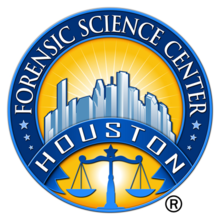
The Houston Forensic Science Center (HFSC) adopted guidelines recommended by the Organization of Scientific Area Committees (OSAC) for Forensic Science in its continuous effort to improve forensic science results for Houston and impact the broader forensic science community.
HFSC’s unique independent structure allows it to take risks that can benefit the broader forensic community on its continuous, collaborative journey to improve forensic sciences nationwide.
We hope others in the community choose to adopt these standards because the more laboratories go this route, the more exponential the benefits. It will not only standardize quality and standards across the forensic community in the United States, it will expand dialogue and allow us to audit one another and assess broad compliance.
For years, forensic scientists have battled with the knowledge that high quality, objective scientific results are critical but that the lack of standards and accreditation requirements make it difficult to convince policy and decision makers of their needs. Labs have for decades been forced to improve quality while doing more work with a static budget and overworked staff. Numerous reports, from the 2009 National Academy of Sciences (NAS) to the Obama Administration’s report from the President’s Council of Advisors on Science and Technology (PCAST,) have pointed to many of these same issues, calling on the community to make much-needed, and well-known, improvements.
And through it all, hundreds of dedicated practitioners, under the auspices and guidance of the National Institute of Standards and Technology (NIST), have worked together to create consensus standards. They have debated and argued, written and edited only to rewrite and reedit for hours and hours to create standards from best practices labs have long appreciated.
“But it is not enough to talk and write. If we don’t implement what we have talked about for years, it not only doesn’t progress forensic sciences, I would argue it is a step back to ignore the work that has been done,” said Dr. Peter Stout, HFSC’s CEO and president.
To set the stage and the example, Dr. Stout asked HFSC’s board of directors to pass a resolution to adopt the OSAC Registry standards into HFSC’s quality manual. That resolution passed unanimously in December 2018 and HFSC was on its way.
“It is important to make a public and obvious commitment to implementation. This is part of holding ourselves accountable to quality expectations beyond just the minimum.” Stout added.
But what does this look like? What are the benefits? And what are the challenges?
For HFSC, the first step was to include this initiative in its quality manual - the overarching set of standard operating procedures that is the foundational document for HFSC’s quality management system.
“This was a big deal,” said Erika Ziemak, HFSC’s quality division director. “The board resolution set the stage for us to add language into the quality manual stating that sections would have one year to adopt an OSAC standard after it is added to the OSAC Registry. It turned out, though, that this was the easiest step.”
Next, HFSC had to figure out how to effectively implement this change company-wide.
HFSC asked each section to tap at least one member to serve as their “OSAC expert.” That person is responsible for researching OSAC standards that are in the approval process and performing a gap analysis to determine what changes need to occur to comply. One of the pivotal roles of the OSAC point of contact is to ensure their section takes advantage of the public comment period and voices any HFSC concerns about proposed standards. This process ensures familiarity with all potential standards, accesses the laboratory’s ability to comply prior to additions to the Registry and gives the lab time between first seeing the standard and compliance.
“The biggest challenge, however, will be an inability to ‘prove’ we are doing what we say we’re doing,” Ziemak said. “Because there are not masses of laboratories that have adopted the standards and accrediting bodies are not yet incorporating the standards, we have no real way of doing an independent, external audit to the OSAC standards.”
The more labs adopt the standards, the easier it will be for labs to learn from one another and to audit each other to the OSAC standards.
The first OSAC standards HFSC is adopting are in the seized drugs and toxicology sections. In many ways, HFSC was already compliant with those standards, so it was a relatively seamless transition. However, HFSC expects there will be some areas in which the standards may be more difficult to implement. HFSC has created a way to deviate from an OSAC standard which allows the section manager to provide an explanation - to be approved by the quality division director - for the deviation.
“This is in part an exercise in the forensic science community. We can’t just say accreditation is important. Accreditation is just a minimum requirement. We need to continually stress improving performance of the entire system and hold ourselves accountable to that system,” Dr. Stout said.
“There will always be parts of an OSAC standard or an entire standard that we don’t like, but that is the reality of consensus standards. The system is designed to allow us all to have a voice and be part of the process,” he added. “Let’s all take that opportunity on the front end and then, on the back end, if there are parts of a standard we don’t love, we will at least understand why it is there and have had an opportunity to voice our opinions.”

